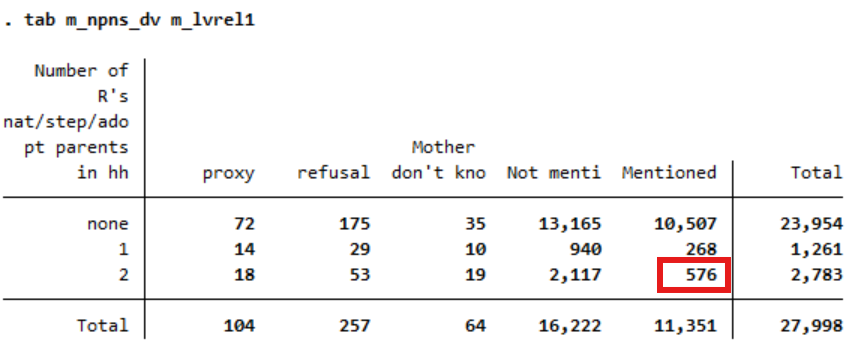Hello Shuqi,
The variable npns_dv accounts not only for biological parents but also for step and adoptive parents. Therefore, using npn_dv would be more accurate in this case. Additionally, this variable is gender-neutral, meaning that the coding (1 or 2) could correspond to either a male or female.
To ensure comparability with lvrel1, you would need to match the pidp values (576 + 268) with the egoalt file to identify the parents. Then, filter for parents where sex = female to align with the intended comparison.
You should also review the syntax used to create npns_dv and npn_dv. Here are the relevant links:
Regarding the lvrel - living relatives question, its interpretation could be subjective and depends on how respondents perceive their family relationships. While families can be complex, the response options do distinguish between "mother" (biological mother) and "step/adoptive mother." Ideally, this should help respondents differentiate their responses and exclude foster parents, in-laws, or others who are not explicitly categorised. However, ultimately, it depends on their personal interpretation.
Therefore, I would recommend prioritising relationships derived from the egoalt file to ensure consistency.
Furthermore, the question "lvrel" is coded as "select all that apply" turning to variables lvrel1 to lvrel10 and lvrel96. This means that if the variable has a value of 1, the option is indicated (i.e., the family member is mentioned). A value of 0 indicates the option was not selected. If the family member is not mentioned, it either means they live in the same household or, if they do not, they are no longer alive.
I hope this information is helpful.
Best wishes,
Roberto Cavazos
Understanding Society User Support Team
